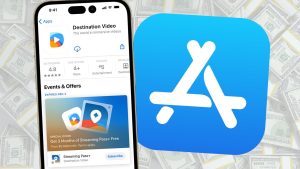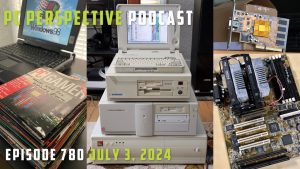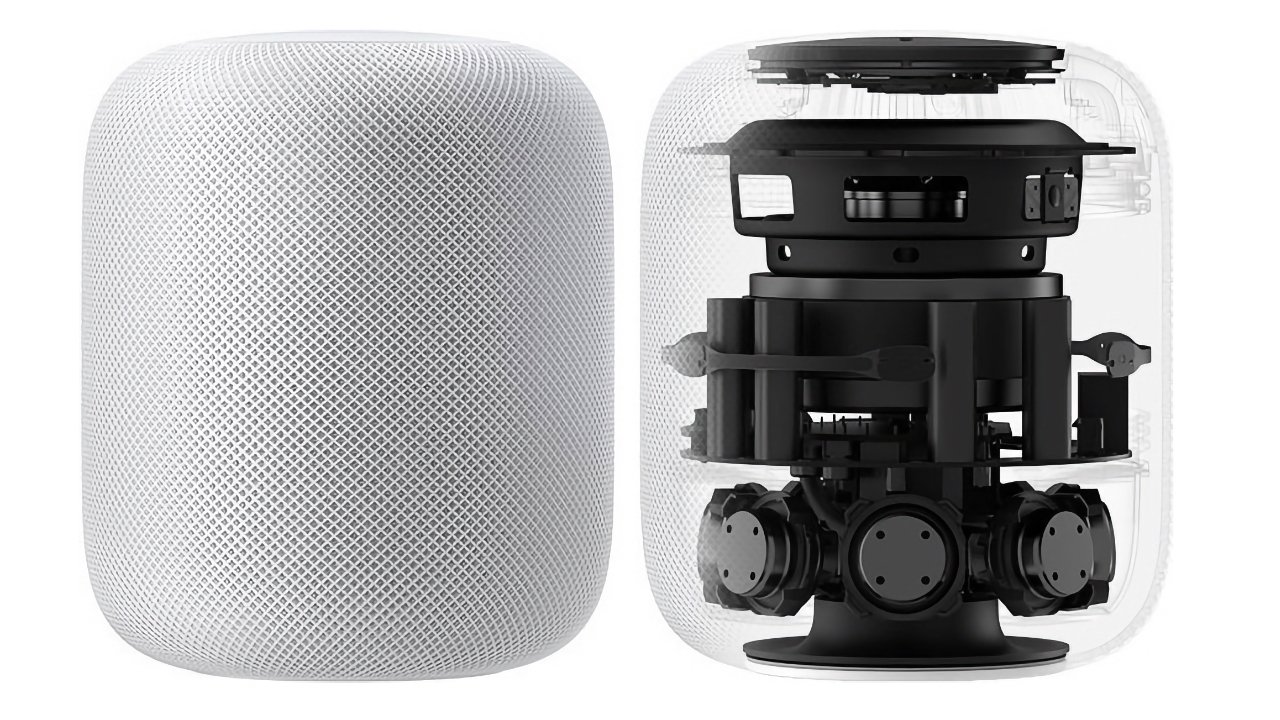
Eight months after it was first announced, Apple’s first HomePods began shipping on February 9, 2018 — and started a peculiar journey of life, death, and resurrection.
There’s been a subtle but fundamental change about the HomePod since it was first launched, and especially since it was first rumored. But it isn’t a technical change, it’s an alteration in how we’ve come round to thinking of it the way Apple always wanted us to.
Today, the HomePod sits in a range of Apple audio devices that includes the later HomePod mini, but also the whole AirPods range. The HomePod is a speaker, and if Apple doesn’t make the absolute finest and greatest audio equipment, it certainly makes the most.
Flash back to the launch in June 2017, though, and a little further to the rumors that began around 2014, and HomePod wasn’t a music speaker. It was a smart speaker, it was Apple’s answer to Amazon’s Alexa.
We expected a Siri Speaker, and Apple was falling behind.
The first rumors
The Amazon Echo, the first Amazon speaker to feature the Alexa voice assistant, had been launched in 2014. Originally released to just Amazon Prime subscribers, by 2015 it seemed to be everywhere, and so Apple seemed to be nowhere.
Apple had acquired Siri and included it in the iPhone 4s back in 2011. Yet despite leading the way with digital assistants, in just those first few years, Siri was already being seen as eclipsed by its rivals.
In 2014, the rumors were starting that something was going to be done about this, and specifically that Apple would enter the smart home space. When WWDC 2014 came in June that year, it was true, Apple launched HomeKit and a push into the smart home — but not a speaker.
But then just shortly afterwards in August 2014, Apple acquired Beats. At $3 billion, it was and remains Apple’s largest ever acquisition of another company, and you don’t spend that money on an audio company without a plan.
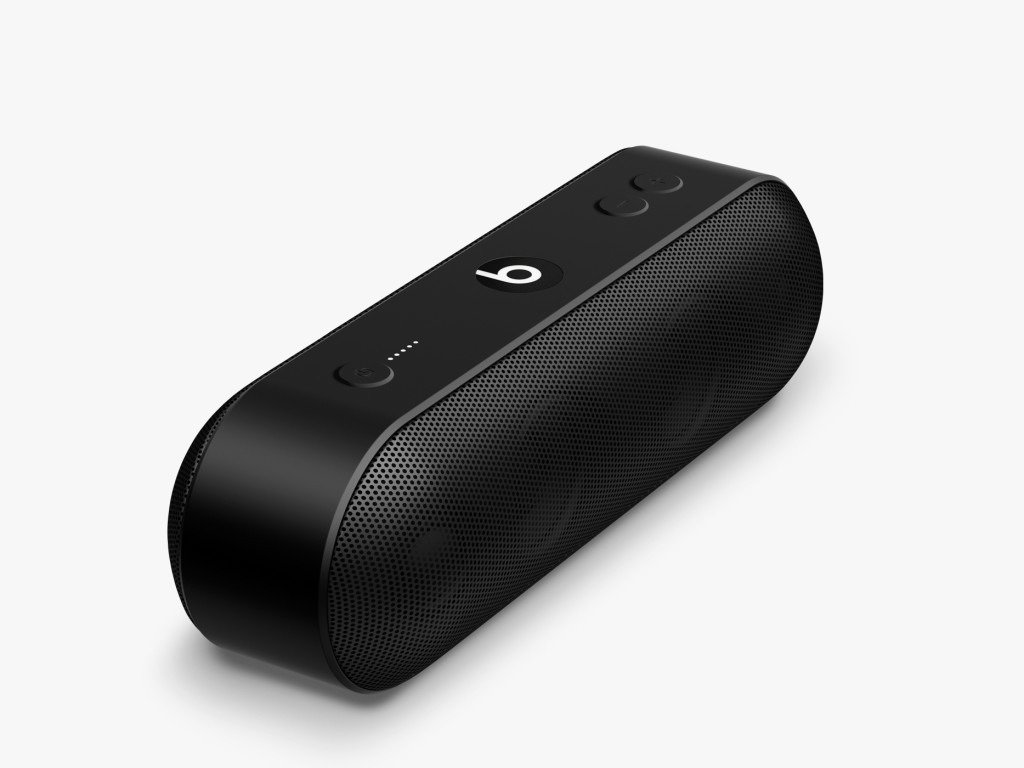 Beats Pill+ was Apple’s first speaker after acquiring Beats
Beats Pill+ was Apple’s first speaker after acquiring Beats
It just didn’t seem as if a Siri Speaker were part of it. In 2015, though, Apple launched its first Bluetooth speaker under the Beats brand. Called the Beats Pill+, this $230 portable speaker introduced charging via Lightning — and did not introduce Siri.
Instead, while the launch seemed to confirm rumors that there would be a Beats-branded Siri Speaker soon, Apple and Beats concentrated on audio quality.
“When you obsess about sound the way that we do at Beats, portable Bluetooth speakers can be very tricky,” said Beats President Luke Wood at the time. “We spent countless days, weeks, months testing for that perfect combination of form and function – small enough to travel but still big enough to feel the emotion of the music. That’s what you get with Pill+.”
Apple isn’t interested
Then as now, Apple will not budge on its secrecy. But also then as now, Apple does find a way to make its position known — and it does have to comply with regulatory filings.
So in 2017, Apple was letting the world know that it wouldn’t be making a smart speaker, or at least not one that looked like the hit Amazon Echo. Early in the year, it was specifically reported that Apple had “no apparent interest” in making an Alexa-like device.
It was said that instead Apple wanted to make Siri an “omnipresent AI assistant across devices,” instead of having it in a speaker as some kind of central hub.
All these years ago, Apple was already talking about AI — and not only with unnamed executives briefing journalists about smart speakers.
“Look at the core technologies that make up the smartphone today and look at the ones that will be dominant in smartphones of the future — like AI,” Apple CEO Tim Cook had said in an interview in August 2016 discussing artificial intelligence company Acquisitions. “AI will make this product even more essential to you.”
And then there was Phil Schiller, who was asked directly in May 2017 what he thought about smart speakers. By then, not only was Amazon topping the sales charts with Alexa devices, but there was also Google Home, so Apple was being beaten to smart speakers twice over.
“My mother used to have a saying that if you don’t have something nice to say, say nothing at all,” responded Schiller — before going on to discuss smart speakers in general.
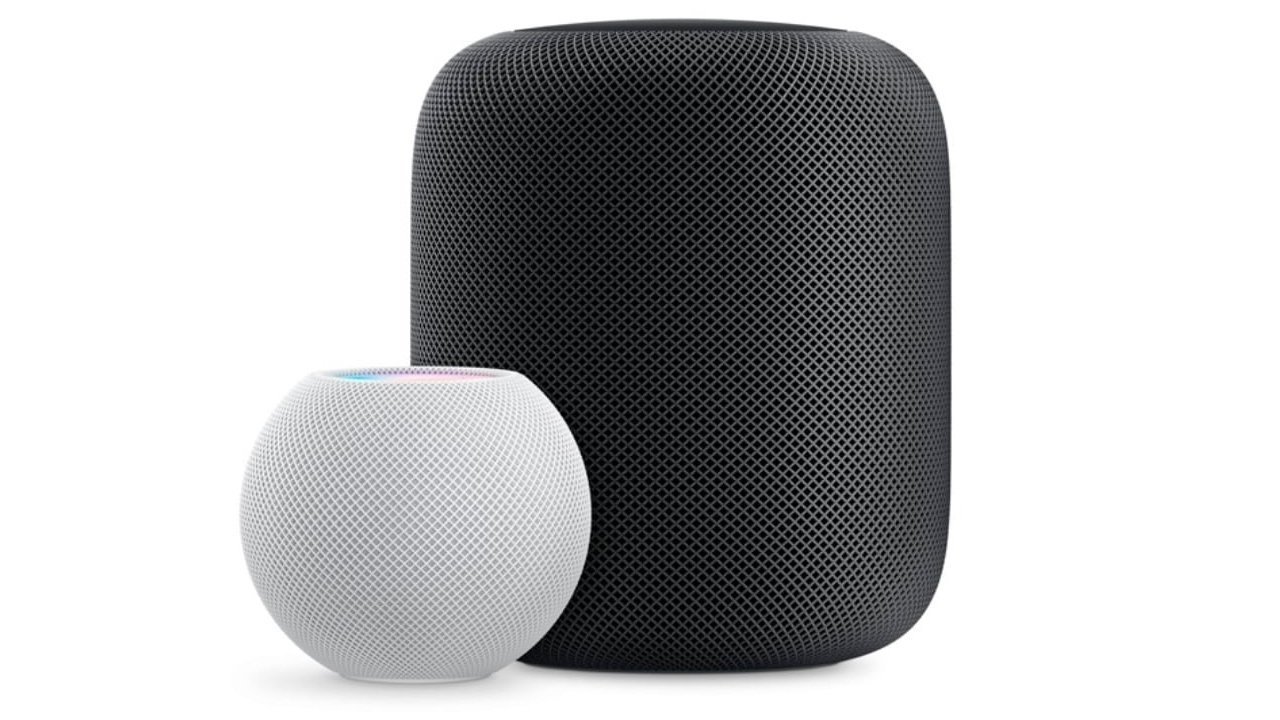 HomePod mini (left) and full-size HomePod
HomePod mini (left) and full-size HomePod
“[We] think it’s important to — that there are times when it’s convenient to simply use your voice when you are not able to use the screen,” Schiller said. “For example, if you’re driving [and] you want Siri to work for you without having to look at the screen, that’s the best thing.”
“Or maybe you’re across the room, and you want to ask Siri to change the song you were listening to — you don’t have to walk over and back,” he continued.
That sounded like Apple was surely going to make a Siri speaker, but then Schiller came as close to saying no as any Apple executive ever would.
“So there’s many moments where a voice assistant is really beneficial, but that doesn’t mean you’d never want a screen,” he said. “So the idea of not having a screen, I don’t think suits many situations.”
“And so I think voice assistants are incredibly powerful, their intelligence is going to grow, they’re gonna do more for us,” he continued, “but the role of the screen is gonna remain very important to all of this.”
And that was that. Until a few days later when analyst Ming-Chi Kuo kicked off rumors that Apple would make a Siri speaker with some kind of touch panel. Others said that there was going to be a Siri speaker that resembled the then current Mac Pro.
In retrospect, they were all right. The Mac Pro at that time was a small cylinder, and when the HomePod finally shipped, it had a touch panel at the top.
And also in early 2017, the rumors were saying that Apple was finalizing its Amazon Echo rival. Ming-Chi Kuo even laid odds, saying there was more than a 50% chance that there would be a Siri Speaker announced at WWDC 2017.
Apple announces the HomePod
“Now, we’ve got one last thing to talk to you about,” said Tim Cook in the WWDC 2017 keynote. “Let’s turn our attention to music.”
“Music has always been a part of Apple’s DNA,” he continued. “We first revolutionized the music industry with iTunes… then we forever changed the way people listen to music on the go with the iPod.”
Cook stressed how the iPhone and Apple Music meant you had 40 million songs in your pocket. He stressed how AirPods meant Apple made “absolutely magical” wireless audio headphones.
“But what about our homes? We think we can do a lot to make this experience much better. Just like we did with portable music, we want to reinvent home music.”
After really hammering home that Apple was focused on music, Cook then handed over to Phil Schiller who married that to the idea of a smart speaker. Schiller basically dissed all existing portable speakers, saying either they were smart with poor audio, or they had okay audio but weren’t smart.
“Our team has been hard at work for many years now on a breakthrough home speaker,” he said.
Schiller claimed that HomePod would “rock the house,” with music. That it had spatial awareness to adjust its output to suit different environments.
Then he said that it would be released later that year. And that was the only thing he was wrong about.
We all presumed that by the end of year really meant absolutely late December, and that does seem to have been the plan. During the long months between June’s WWDC and that expected release date in time for Christmas, all we had were some aha moments as patent filings revealed details of the HomePod.
Delayed HomePod launches
Apple does make excellent audio devices, but it also seems to have trouble making them on time. Just as with the AirPods the year before in 2016, Apple aimed for Christmas with the HomePod and didn’t make it.
AirPods technically did, as small-scale shipping began in late December 2016, but it was into 2017 before those were truly available. With the HomePods, December just came and went.
Or at least, December came and went without a HomePod shipping, but there was news. It was in this month that stories began circulating about the HomePod’s origins.
Reportedly, the HomePod was started as a side project by Apple’s Mac audio engineers. And we learned that Schiller hadn’t been exaggerating when he said the project had been worked on for many years.
It was revealed that HomePod had gone from being this side project to an actual, official endeavour back in 2014. That was before the Amazon Echo was released, but despite feeling “blindsided” by that smart speaker, the Apple team didn’t think its audio was good enough.
And that was always key. Even in 2014, what would become the HomePod was to be about music and high-quality audio. Siri was always going to be part of it, but not an important part.
Specifically, Amazon had introduced the idea of “skills” — really just another word for apps — that could be added to the Echo. HomePod would not do that.
What it would do was play music, and we learned that by 2016 it was being tested across Apple. So in 2016, Apple’s audio engineers were using it, and apparently retail workers were recruited to test it out.
For the rest of us, we didn’t hear a word until mid-2017 — and then we wouldn’t hear a word until “early 2018.”
But others, including AppleInsider staff, did get to hear much more than a word. Apple spent the months between announcement and shipping, showing off the HomePod’s music quality in private briefings.
“I was able to listen to a prototype of Apple’s new HomePod audio device, both playing on its own and in concert with a second HomePod unit,” wrote Daniel Eran Dilger at the time. “Rather than sounding like a home speaker, HomePod made me feel like I was sitting in a luxury automobile surrounded by rich, engaging audio reproduction without an obvious source.”
Later, on the eve of when Apple was supposed to ship the HomePod, Daniel Eran Dilger summarized the HomePod for AppleInsider. And once more, the point was that HomePod was not about Siri, it was about “the future of home audio.”
Finally, a HomePod
There were and always will be audiophiles who did not and do not like HomePods. But overall, it’s fair to say that the HomePod was very well received for its audio quality.
No question, it blew Amazon Echo away. And no question, that was what Apple wanted. High quality audio was indeed always what Apple had aimed at.
But then there was something else that Apple always does, and it concerned the price. A HomePod originally cost $349 — seven times more than an Amazon Echo.
We will never know how many HomePods Apple sold, but by 2020 it was looking like the answer was not many. By late 2020 specifically, the rumors were that Apple was not going to make a HomePod 2.
But the same rumors were claiming that Apple would make a HomePod mini. For once, a rumor was right factually, and even right about the name.
On October 13, 2020, Apple launched the HomePod mini. And on November 6, 2020, it began taking pre-orders for the tiny device.
The price was smaller, too. HomePod mini launched at $99 — and was as well-received as the original HomePod, despite clear differences between the two.
Apple does seem to be fundamentally opposed to competing on price, and even at $99, the HomePod mini was twice the price of a base Amazon Echo. But it was a low enough price that if it weren’t exactly a casual purchase, it was a lot easier to buy a HomePod mini than the full-size original.
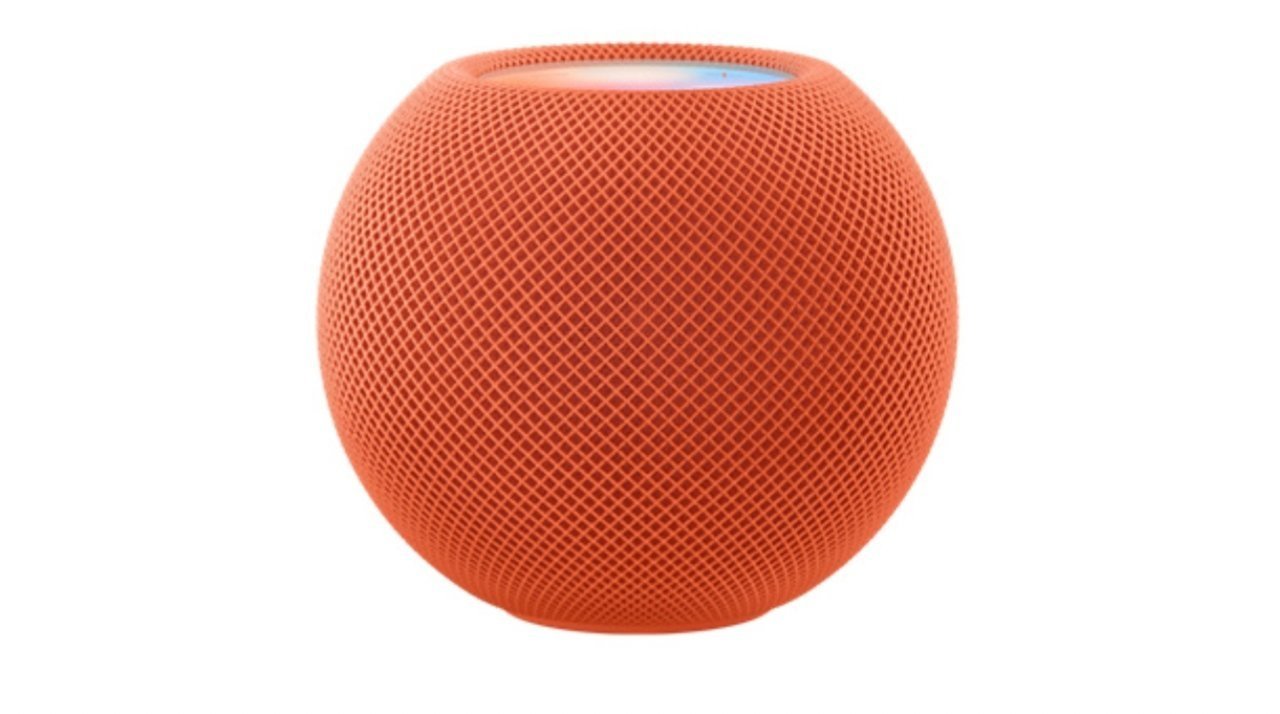 HomePod mini was less than half the price of a full-size HomePod, and came in many different colors too
HomePod mini was less than half the price of a full-size HomePod, and came in many different colors too
And so while again it will never be revealed how many HomePod mini devices Apple has sold, there was a big clue that it was a higher number than for the original HomePod.
For in March 2021, Apple called it. The HomePod was dead, long live the HomePod mini.
“HomePod mini has been a hit since its debut last fall, offering customers amazing sound, an intelligent assistant, and smart home control all for just $99,” said Apple in a statement. “We are focusing our efforts on HomePod mini.”
“We are discontinuing the original HomePod, it will continue to be available while supplies last through the Apple Online Store, Apple Retail Stores, and Apple Authorized Resellers,” it continued. “Apple will provide HomePod customers with software updates and service and support through Apple Care.”
The end of the HomePod was exaggerated
There was a scramble to buy the remaining HomePods before they went out of stock. But out of stock they went, and while you could still pick some up on eBay, the original HomePod was practically erased from history.
Or so it was outside Apple.
Inside Apple, something was happening and yet again, we will never know exactly what. It’s possible that the success of the HomePod mini was such that Apple began thinking it could do more, that it had begun a market it could now sell more into.
Whatever it was, in January 2023 there was that rarest of rare things — an Apple product announcement that no one saw coming. The full-size HomePod was coming back.
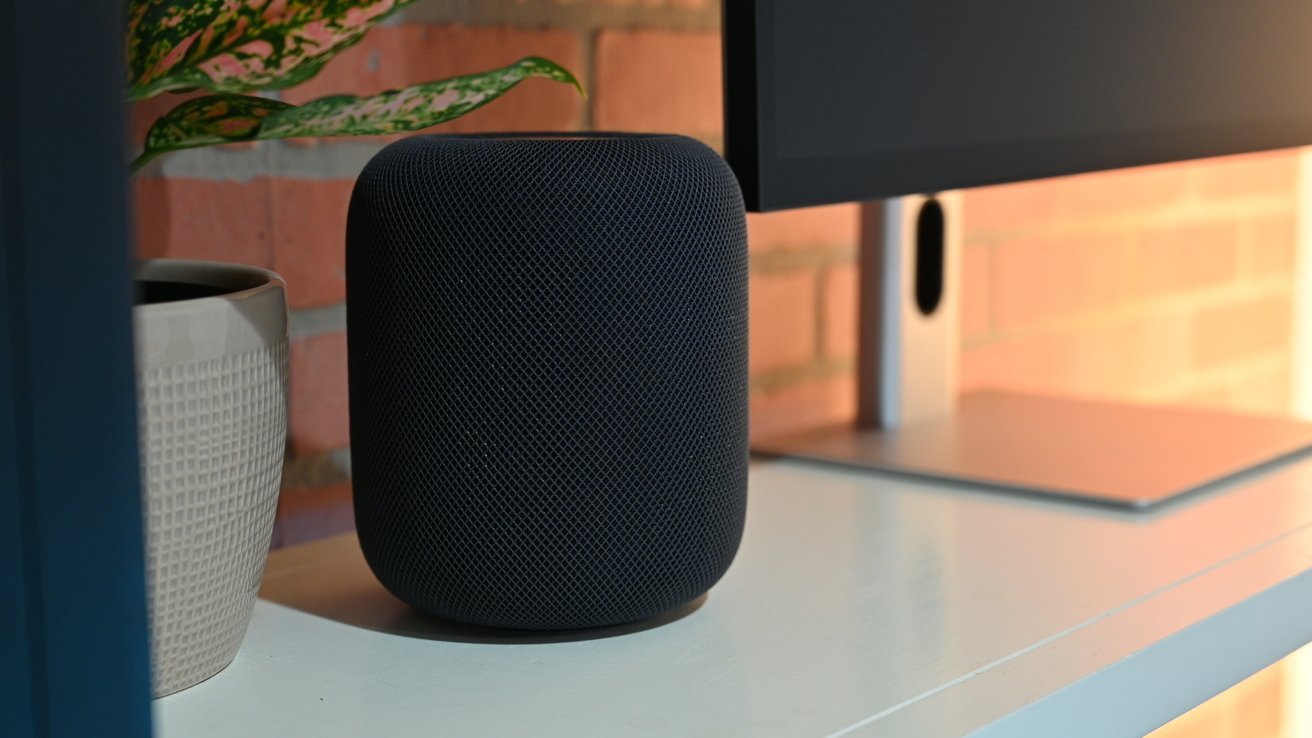 The reborn HomePod
The reborn HomePod
“Leveraging our audio expertise and innovations, the new HomePod delivers rich, deep bass, natural mid-range, and clear, detailed highs,” Greg Joswiak, Apple’s senior vice president of Worldwide Marketing, said at the time. “With the popularity of HomePod mini, we’ve seen growing interest in even more powerful acoustics achievable in a larger HomePod.”
The new HomePod would look mostly the same — the top screen is now inset rather than gently rising like a small dome. It would be considerably different on the inside.
But the most visible change was the price. The reborn HomePod retailed for $299, a saving of only $50 on the original, but also bringing it below $300.
HomePod was back — but the market was now different and maybe even diffident. In its review of the new model, AppleInsider concluded that it was “a great speaker” — but “doesn’t do much to justify its $300 price tag.”
What happens next
On the seventh anniversary of the original HomePod finally shipping, the home audio market is very different. At the higher music quality end, Sonos has severely stumbled, for instance.
Then at the lower smart speaker part of the market, Microsoft’s Cortana came and went. Amazon’s Alexa seemed to become practically abandoned, although there have been regular rumors of it being revamped with AI.
But perhaps the most telling thing for the HomePod is that while we finally, and unexpectedly, got a HomePod 2, there hasn’t been a HomePod 3. At least, not yet.
It’s now just over two years since the full-size HomePod came back, and Apple simply doesn’t mention it any more.
That said, though, the HomePod mini hasn’t exactly changed a lot since its launch in 2021. There have been new colors from time to time, though.
And in 2023, we saw an update that brought something surprising to both the HomePod mini and the resurrected full-size HomePod. Both models turned out to have temperature and humidity sensors, built right in.
Quite startlingly, what we learned was that the HomePod mini had always had this sensor. It just wasn’t used, wasn’t mentioned, wasn’t enabled for the first two years that the HomePod mini was on sale. It wasn’t until January 2023 that a software update turned on these sensors.
Apple must have had plans to use these sensors and — as ever — we’ll doubtlessly never know why it took so long.
But the result is that on the anniversary of the original HomePod’s launch, there are signs that Apple has long term plans. Yet with the years going by between updates, there are signs that those plans are not working out.
Apple is unlikely to cancel the HomePod again, not unless its sales are dramatically poor. And it does appear that the HomePod mini is at least a steady seller, if not an Amazon Echo-level one.
So the HomePod range is here to stay, and the HomePod range is very good for listening to music on at home. But maybe Apple has moved on from the HomePod range and what we’ve got now is all we’re going to get.
At least until Siri is revamped with Apple Intelligence — and Apple launches the expected Home Hub.
Most recent rumors have painted a picture of the Home Hub as an iPad-like screen. But at various times, it’s sounded like it could be more like a regular HomePod with a screen attached.
Perhaps that is what Phil Schiller was picturing, way back in 2017 when he chose not say anything unkind about the then-current smart speakers.


